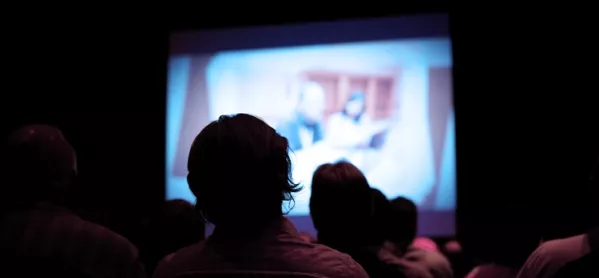- Home
- Why it’s time to reinvent the Christmas film lesson
Why it’s time to reinvent the Christmas film lesson

Festive films are as much a part of Christmas as Santa, trees and turkey. When I was at school, a screening of a Christmas video − usually The Muppet Christmas Carol (1992) or Santa Claus: The Movie (1985) − was an annual tradition during the last week before the holidays.
At the time, there was no learning value attached to these viewings, besides spreading seasonal cheer and goodwill to all men. But what if there were? What if the Christmas DVD lesson was still fun and festive, but also unexpected and challenging?
For the past eight years I’ve been working with archive film at the British Film Institute. The BFI National Archive is one of the largest in the world and contains a huge variety of film materials dating from the very earliest days of cinema up to the present day. Thanks to our Unlocking Film Heritage programme, plenty of fascinating content from the BFI and other public film archives is now accessible for free online, including much of our Christmas Crackers collection.
So, rather than replaying The Muppet Christmas Carol yet again this year, why not try some of these ideas to spark a discussion about festive film and television’s past, present and future?
1. Compare well-known characters
We’ve come a long way since the one-shot theatrical sets of very early cinema, but there’s also much that has stayed the same. The Mistletoe Bough (1904) depicts a ghostly gothic story of a Christmas ballad, while G.A. Smith’s technically ambitious Santa Claus (1898) and the impressive A Christmas Carol (1914) show well-known festive figures imaginatively adapted for the time.
Pair these titles with features such as The Nightmare Before Christmas (1993), The Polar Express (2004) or Scrooged (1988), and ask students to think about change and continuity. I’m also a fan of As Christmas Draws Near (1928) and Dreams of Toyland (1908), sinister shorts of children’s toys coming to life. Play these as a surprise before a screening of one of the Toy Story franchise.
2. Reinvent a classic
A Message from Mars (1913), Britain’s first full-length science-fiction feature, is another intriguing interpretation of Dickens’ A Christmas Carol. This futuristic vision focuses on a Martian, exiled to Earth, with a mission to change the heart of a selfish man. Use this as a starting point for students to come up with their own reworkings of Christmas classics.
3. Bring wartime Christmas to life
Wartime newsreels like Christmas at the Front (1914), Parcels for the Front (1915) and Tommys’ Xmas Pudding (1916) offered families at home reassuring images showing that troops weren’t being forgotten at Christmas.
Meanwhile, festive films from the Second World War, like Christmas Under Fire (1941) or Keep Them Safe, Keep Them Happy (1940), were often government-sponsored and designed to boost morale, elicit sympathy and reaffirm that Christmas should still be celebrated despite difficult circumstances. Think about how the filmmakers get their message across through images and language. You could show one of these films beside features which present young people’s experience during the war, such as Life is Beautiful (1997), Goodnight, Mister Tom (1998) or The Boy in the Striped Pyjamas (2008).
4. Share family traditions
Opening presents, eating turkey, wearing paper hats; home movies from our regional archives show how these Christmas Day rituals haven’t changed much over the years. Try Xmas 1937, Our Christmas 1961 or any of the Ashlee Family Films. How different do these films look, compared with what we might capture today on phones and tablets? What’s still the same?
5. Analyse Christmas advertising
Compare this year’s Christmas TV campaigns with festive advertising and public information fillers from the past. For example, Premium Bonds: Xmas 1959 uses a very merry Santa to encourage viewers to save and win, while Drink Drive Office Party Cartoon (1964), made before it was illegal to drink and drive, suggests that it’s women’s responsibility to ensure that men don’t drink and drive. Discuss the effectiveness of these campaigns, and try updating them for today’s audience.
Gemma Starkey is the online resources and learning manager for the BFI. You can explore further materials by accessing the BFI Player and BFI YouTube channel.
Image: A Christmas Carol (1914), courtesy of the BFI National Archive
Want to keep up with the latest education news and opinion? Follow TES on Twitter and like TES on Facebook
Keep reading for just £1 per month
You've reached your limit of free articles this month. Subscribe for £1 per month for three months and get:
- Unlimited access to all Tes magazine content
- Exclusive subscriber-only stories
- Award-winning email newsletters